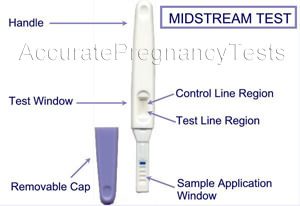
Pregnancy Test Instructions: A Comprehensive Guide
Introduction
Pregnancy tests are an essential tool for women seeking to confirm or rule out pregnancy. These tests detect the presence of human chorionic gonadotropin (hCG), a hormone produced by the placenta during pregnancy. Understanding how to use a pregnancy test correctly is crucial to ensure accurate results. This comprehensive guide provides detailed instructions on how to perform a pregnancy test, interpret the results, and understand potential limitations.
Types of Pregnancy Tests
There are two main types of pregnancy tests:
- Urine tests: These tests detect hCG in urine samples. They are widely available and can be performed at home or in a healthcare setting.
- Blood tests: Blood tests measure hCG levels in the blood. They are typically performed in a healthcare setting and provide more accurate results than urine tests.
Urine Pregnancy Test Instructions
Materials:
- Pregnancy test kit
- Urine sample
- Timer
Instructions:
- Read the instructions carefully: Each pregnancy test kit may have slightly different instructions. Read the instructions thoroughly before proceeding.
- Collect a urine sample: Collect a urine sample in a clean container.
- Prepare the test: Remove the pregnancy test strip from the kit. Some tests require you to remove the cap and hold the absorbent tip in the urine stream for a few seconds. Others may have a built-in dropper that you use to transfer a few drops of urine onto the test strip.
- Wait for the results: Hold the test strip upright and wait for the results to appear. The time it takes for the results to appear varies depending on the test kit. Most tests show results within 1-5 minutes.
- Interpret the results: Two lines indicate a positive result, indicating the presence of hCG and suggesting pregnancy. One line indicates a negative result, indicating the absence of hCG and suggesting no pregnancy.
Blood Pregnancy Test Instructions
Materials:
- Healthcare provider
- Blood sample
Instructions:
- Visit a healthcare provider: Blood pregnancy tests are typically performed in a healthcare setting.
- Provide a blood sample: The healthcare provider will draw a blood sample from your arm.
- Wait for the results: The blood sample will be analyzed in a laboratory to determine the hCG levels.
- Interpret the results: The healthcare provider will interpret the results and inform you if you are pregnant or not.
Accuracy and Limitations
Pregnancy tests are generally accurate, but there are certain factors that can affect the results:
- Timing: Pregnancy tests are most accurate when taken after a missed period. Taking a test too early may result in a false negative.
- Urine dilution: Dilute urine can affect the accuracy of urine pregnancy tests. Avoid taking the test after drinking excessive fluids.
- Medications: Certain medications, such as fertility drugs, can interfere with pregnancy test results.
- Medical conditions: Some medical conditions, such as ectopic pregnancy or recent miscarriage, can affect hCG levels and impact the accuracy of pregnancy tests.
Interpreting the Results
Positive Result:
- Two lines on a urine pregnancy test
- Elevated hCG levels in a blood pregnancy test
A positive result strongly suggests pregnancy. However, it is important to consult a healthcare provider to confirm the pregnancy and rule out any underlying medical conditions.
Negative Result:
- One line on a urine pregnancy test
- Low or undetectable hCG levels in a blood pregnancy test
A negative result suggests that you are not pregnant. However, it is possible to get a false negative if the test is taken too early or if there are other factors affecting the results. If you suspect you may be pregnant despite a negative test, consult a healthcare provider.
Invalid Result:
- No lines or only one line on a urine pregnancy test
- Inconclusive results on a blood pregnancy test
An invalid result means that the test was not performed correctly or there was a problem with the test kit. Repeat the test with a new kit or consult a healthcare provider for further evaluation.
Follow-Up Care
If you receive a positive pregnancy test result, it is important to schedule an appointment with a healthcare provider to confirm the pregnancy and discuss prenatal care. If you receive a negative result but still suspect you may be pregnant, consult a healthcare provider for further evaluation.
Conclusion
Pregnancy tests are a valuable tool for confirming or ruling out pregnancy. By following the instructions carefully, understanding the potential limitations, and interpreting the results accurately, you can ensure reliable results. If you have any questions or concerns about your pregnancy test results, do not hesitate to consult a healthcare provider.